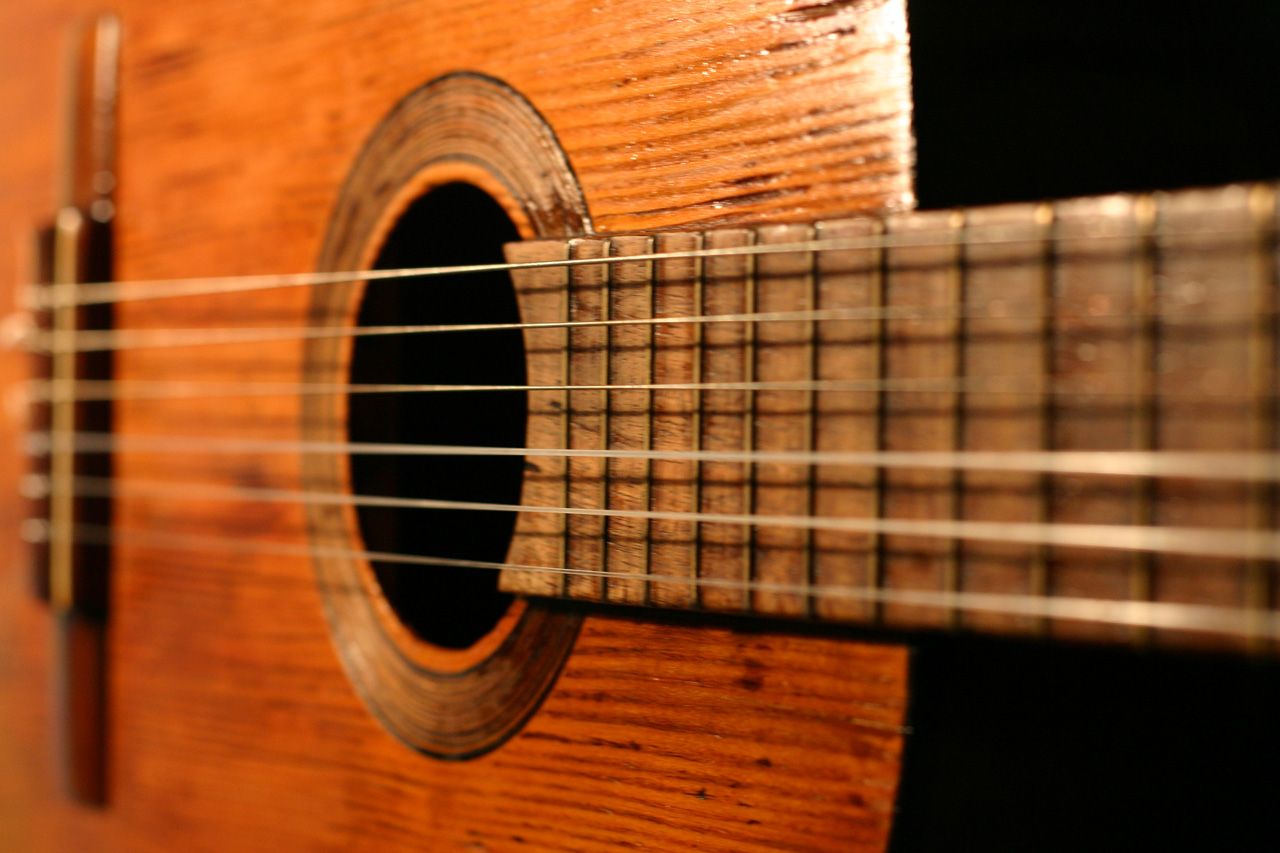flamenco
The flamenco guitar, the Spanish guitar and its art
Its origin came from the Greek zither, the Roman crotta and the medieval vihuela. According the intellectuals the guitar developed from a kind of lute with a large mast that was introduced in the Iberian Peninsula during the Arab domination.

Its origin came from the Greek zither, the Roman crotta and the medieval vihuela. According the intellectuals the guitar developed from a kind of lute with a large mast that was introduced in the Iberian Peninsula during the Arab domination. When they brought their instrument they found here the Spanish vihuela.
The firsts to make known the lute and the vihuela were the troubadours who accompany their abilities with this instrument, sing, dance, buffoonery and poems. It was at the end of the XVI century when this instrument which had only four strings got the name of Spanish guitar and Vicente Espinel (1550- 1624) introduced the fifth string named “prima”.
In the XVII century Gaspar Sanz from Aragon wrote the first treatise about instrumental technique that inspired the coming guitarists. By mid of the same century the guitar became less popular against the piano and the violin. In the XVIII century the father Basilio, who was professor of María Luisa, Carlos IV’s wife, added the “bordón”, the sixth string.
Three great figures appeared in the guitar ambiance of the XIX century: Dionisi Aguado (1784-1849) compositor and diffuser of the translation of the guitar to the plays of Beethoven, Haydn, Mozart, etc….was the author of a guitar method and an harmony treatise that are still used; Francisco Tárrega (1852-1909) from Castellon who followed the steps of Fernando Sort and rescue the guitar from its decadence for being considered a gypsy instrument of the population in taverns against the Italian opera.
The compositor and performer Tárrega is responsible for the golden époque of the guitar for creating the modern guitar school. His transcriptions of the classic plays and inspiring compositions Recuerdo de la Alhambra, Danza mora, Capricho árabe, etc… are present in the concerts of Andrés Segovia, Renata Tarragó, Narciso Yepes, Francisco Garrido or Rafael Rico. These pieces adapted to the flamenco guitar are also in the repertory of great flamenco artists.
The flamenco guitar, that has the same form than the classic one, came up in the mid of the XIX century with the opening of the singing cafes. These players, illiterate in musical theory, but inspiring for mixing sing, dance and guitar make the flamenco art.
Vicente Escudero talked about an enmity between classic guitar and flamenco guitar. The classic artists accused the flamenco of ignoring the music because they didn’t follow any rules and the flamenco artists accused the classic of being pure intellectuals without nerve and Spanish character. Despite that, both mixed and influenced one another.
Ramón Montoya Salazar (Madrid 1879-1949) is one of the best guitarists of all times. He renewed and dignified the flamenco guitar and created a school in which great flamenco artists will be trained such as Niño Ricardo, Sabicas and many others until Paco de Lucía who started a new stage in the guitar history.
The firsts to make known the lute and the vihuela were the troubadours who accompany their abilities with this instrument, sing, dance, buffoonery and poems. It was at the end of the XVI century when this instrument which had only four strings got the name of Spanish guitar and Vicente Espinel (1550- 1624) introduced the fifth string named “prima”.
In the XVII century Gaspar Sanz from Aragon wrote the first treatise about instrumental technique that inspired the coming guitarists. By mid of the same century the guitar became less popular against the piano and the violin. In the XVIII century the father Basilio, who was professor of María Luisa, Carlos IV’s wife, added the “bordón”, the sixth string.
Three great figures appeared in the guitar ambiance of the XIX century: Dionisi Aguado (1784-1849) compositor and diffuser of the translation of the guitar to the plays of Beethoven, Haydn, Mozart, etc….was the author of a guitar method and an harmony treatise that are still used; Francisco Tárrega (1852-1909) from Castellon who followed the steps of Fernando Sort and rescue the guitar from its decadence for being considered a gypsy instrument of the population in taverns against the Italian opera.
The compositor and performer Tárrega is responsible for the golden époque of the guitar for creating the modern guitar school. His transcriptions of the classic plays and inspiring compositions Recuerdo de la Alhambra, Danza mora, Capricho árabe, etc… are present in the concerts of Andrés Segovia, Renata Tarragó, Narciso Yepes, Francisco Garrido or Rafael Rico. These pieces adapted to the flamenco guitar are also in the repertory of great flamenco artists.
The flamenco guitar, that has the same form than the classic one, came up in the mid of the XIX century with the opening of the singing cafes. These players, illiterate in musical theory, but inspiring for mixing sing, dance and guitar make the flamenco art.
Vicente Escudero talked about an enmity between classic guitar and flamenco guitar. The classic artists accused the flamenco of ignoring the music because they didn’t follow any rules and the flamenco artists accused the classic of being pure intellectuals without nerve and Spanish character. Despite that, both mixed and influenced one another.
Ramón Montoya Salazar (Madrid 1879-1949) is one of the best guitarists of all times. He renewed and dignified the flamenco guitar and created a school in which great flamenco artists will be trained such as Niño Ricardo, Sabicas and many others until Paco de Lucía who started a new stage in the guitar history.
